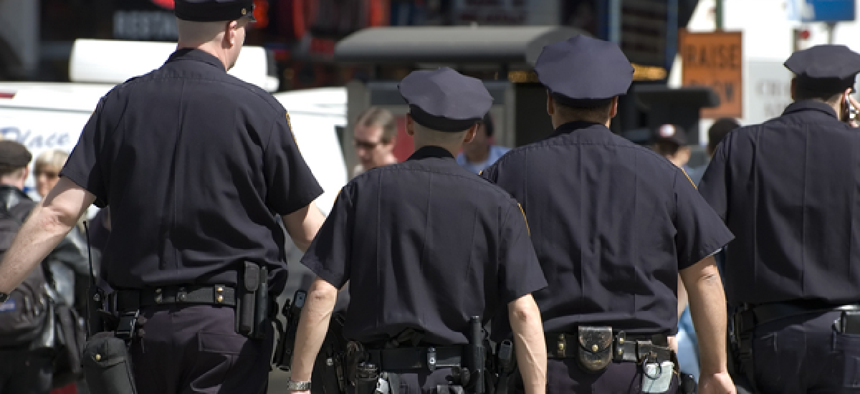The changing body-cam conversations

As communities get more experience with body-worn cameras, policies and focus are evolving, the Urban Institute finds.
Proponents of body-worn cameras have long argued that the technology would increase transparency and improve how police interact with citizens. Many cities signed up for the camera programs, especially after the Justice Department announced $20 million in funding for a pilot program in May 2015.
Since then, attitudes on the use of the technology have evolved, according to a blog post by the Urban Institute. The public policy research organization focused on four areas of change related to the use of the cameras: program implementation, camera activation, handling of records and general use of body cameras.
In 2015, 46 states introduced legislation dealing with body cameras; four of which enacted laws, according to Fiscal Note. But last year the tenor of new legislation changed, the Urban Institute found. Instead of focusing on requiring the use of body cameras, new policies focused on studying their use. “To date, 16 states have engaged or are engaging in some form of a pilot program or study group for body cameras,” the Urban Institute said.
Many governments and police departments are also writing rules for when an officer should be recording video. Early laws governed when the cameras should be on. More recent legislation specifies when the cameras should be turned off -- in schools and hospitals, for example.
Gaining access to the video that an officer does record has become a dividing issue in many communities. Local residents will often call for the release of body camera footage following an officer-involved killing only to be told its release would interfere with an investigation. States have taken different approaches, the Urban Institute study found. North Carolina passed a bill that put tight limits on the circumstances under which body camera footage could be released. Oklahoma, though, passed a bill that “prohibits redaction of footage depicting a death caused by a law enforcement officer.”
And while many law enforcement offices adopted body-worn cameras, some have decided that the costs associated with the cameras and the data they produce is too great and have decided to forego participation.
Indiana law requires agencies to retain body-camera footage for at least 190 days. So when the Clarksville, Ind., police department estimated that using body-worn cameras would cost it as much as $100,000 annually, the program was suspended, the Urban Institute said.
The National Institute of Justice has two ongoing studies looking into the effectiveness of body cameras. One is following 400 officers in the Las Vegas Metro Police Department to determine the impact of the cameras on policing strategies; the other, working with the Los Angeles Police Department, is focusing on the cameras’ effects on police-citizen interactions and crime
These studies can help determine if this technology is effective in the way that proponents claim, Craig Uchida, of Justice and Security Strategies Inc., said in a NIJ video discussing the NIJ research he is leading.
“Body-worn cameras are one tool that haven’t been really analyzed, evaluated, examined to determine really whether those cameras are going to reduce friction in the community,” he said.
NEXT STORY: Education Department creates developers hub





